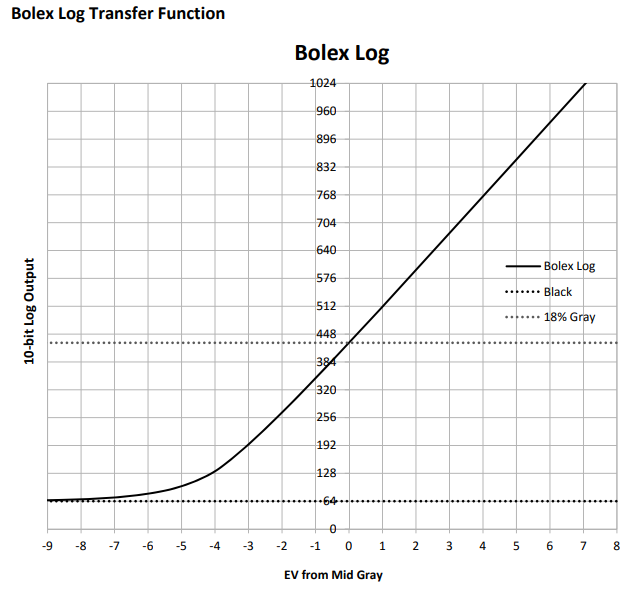All Activity
- Past hour
-
I'm not familiar with the GH5v2 but Panasonic was (at that time) updating cameras with all the user-feedback, and your description was certainly things that the community was wanting. I definitely agree that one of the main challenges is taking a clip that was shot in LOG and has 10-14 stops of DR in it, and somehow stuffing that into Rec709 which has just over 5 stops of DR. This obviously manifests in having to crush or severely compress various areas of the luminance range, but it also means that the source material can have colours that are dramatically more saturated than Rec709 can contain and you'll need to work out how to contain those too. Once you have enough DR to shoot the scenes you need to shoot, having more is actually a liability rather than a feature. I co-produced a 5-min short with my sister a long time ago, and we estimated that all up it had 10,000 person-hours in it. But enough of this blasphemous film-making talk - we should go back to talking about camera colour profiles like film-making doesn't exist!
-
 PannySVHS reacted to a post in a topic:
Joker 2 - Color Breakdown
PannySVHS reacted to a post in a topic:
Joker 2 - Color Breakdown
-
 kye reacted to a post in a topic:
Color - SOOC vs. LUTs/Grading
kye reacted to a post in a topic:
Color - SOOC vs. LUTs/Grading
-
 ac6000cw reacted to a post in a topic:
Color - SOOC vs. LUTs/Grading
ac6000cw reacted to a post in a topic:
Color - SOOC vs. LUTs/Grading
-
Based on my own experience of putting together 10-20 minute YT videos, I'd agree with that. I don't usually do the whole editing process in one go - more often it's broken into 1-2 hour sessions and from start to finish it spans a week or more. My usual process to create something for YT is: Decide on the topic/subject for the movie (based on what content I've already got, usually from an event or place I've visited, recently or in the past). Choose the clips that might be included. Decide on a 'flow' for the movie - is it going to be basically chronological or geographical? Put the clips that might fit into the flow into the editor media bin. Put the clips onto the timeline in the right order. There might be 30 or more. Do a very rough cut and play it. Delete or trim the clips to improve the flow and get the overall length within the target (it's almost always too long to start with). Repeat the cut & trim cycle until happy. Go through the timeline and adjust brightness/contrast/saturation/colour as necessary (this can be very time consuming!). If a clip is proving really awkward to adjust, decide if it's essential to the flow. If not, could it be discarded or replaced with different one? Do a similar adjustment process for the audio content (equally or more important as the picture content). For the wobbly clips (which for old content will be quite a lot of them!) try to stabilise them - another time consuming activity! Add titles to tell the viewer more about what they're looking at. This often involves some research to find the information. Add timeline markers and generate a list of YouTube chapter points from them. Render out the movie and play it through to review it. Fix the issues found (there will be some...). Render it out again and upload it to YT as a 'private' video. Add a description, the chapter list, a suitable thumbnail and the 'end screen' stuff in the YT 'Studio'. Check it plays and looks OK on YT. Make it 'public' on YT and hope al least a few people watch it for more than 10 seconds... The above also needs cups of coffee and maybe wine too 😉 SRV1981 - next time you watch something on YT, just think about how much creative work and time has probably gone into it.
-
I highly recommend going to the source if you're interested in going deeper, here are a couple of interviews with Jill on Joker that I found to be fascinating and thought-provoking: ...and this interview with Jill on John Wick and other films where they even talk about specific shots etc: Lots of info out there if you search and go looking for it 🙂
-
 sanveer reacted to a post in a topic:
Fuji X-H2S
sanveer reacted to a post in a topic:
Fuji X-H2S
-
I want that Dave Altizer back in this forum!😂 Like many other friends of the peek times of this forum! @mercer
-
 PannySVHS reacted to a post in a topic:
Color - SOOC vs. LUTs/Grading
PannySVHS reacted to a post in a topic:
Color - SOOC vs. LUTs/Grading
-
 mercer reacted to a post in a topic:
Color - SOOC vs. LUTs/Grading
mercer reacted to a post in a topic:
Color - SOOC vs. LUTs/Grading
-
 PannySVHS reacted to a post in a topic:
Fuji X-H2S
PannySVHS reacted to a post in a topic:
Fuji X-H2S
-
The thumbnail of the XH2s and the profile picture of the guy look IR heavy indeed. It seems like he actually likes this look.😊
- Today
-
 mercer reacted to a post in a topic:
Color - SOOC vs. LUTs/Grading
mercer reacted to a post in a topic:
Color - SOOC vs. LUTs/Grading
-
I've been mentioning this before,that I found the GH5 much easier to grade than the S series. It has 709 as colour space vs V-Gamut on the S cameras, also two to 2.5 stops less dynamic range. For lit scenarios I was very fine with the full curve and gamut as contrast and color was much more stylized and designed. The GH5 in MK II alteration is still a camera I wanna check out with its creamy high resolution image. It's more classic and organic compared to the crispier image of the MK I. I have only seen one person ever with the MKII. It has 10bit in 60p 4K as well. And from the Mark I the beloved S16 crop or optional 2/3" mode via 2x digizoom. Is the latter without heavy aliasing and moiré on the GH5? @kye
-
 PannySVHS reacted to a post in a topic:
Color - SOOC vs. LUTs/Grading
PannySVHS reacted to a post in a topic:
Color - SOOC vs. LUTs/Grading
-
I watched this yesterday and it inspired me to watch the first film (only 5 years late!). It's unusual to see Waqas quite so excited about something but it was an excellent view into the art, rather than the technique, in top-end colour grading.
-
 j_one reacted to a post in a topic:
Panasonic S5 II (What does Panasonic have up their sleeve?)
j_one reacted to a post in a topic:
Panasonic S5 II (What does Panasonic have up their sleeve?)
-

Panasonic S5 II (What does Panasonic have up their sleeve?)
MrSMW replied to newfoundmass's topic in Cameras
I’ve been wrestling with just having and using a gimbal for at least 5 years now and have just sold my 3rd and final trial unit, the DJI RS3. I have such a limited use case and arguably don’t need one at all, but there are a couple of times on most jobs when I would like the option but without any of the hassle. Step forward firmware update 2.0/3.0 It’s not out for a few days other than with a few folks who are showing it off, but damn, it’s looking good. OK it’s based on an even stronger EIS which crops harder, but that is fine by me as I prefer a longer lens and with my Sigma 28-70mm f2.8 glued on to my S5ii and in S35 4k 50p mode, what was already more like 42-105 is going to become more like a 50-120. 👍👍👍 For the very rare times I need wider, I still have the dinky 18-50mm (27-75) in the bag but this is now one sweet set up for my needs. -
Looks like it's only a problem with the nisi vnd
-
I'm just wondering why you were posting a random YT video. If I posted a new thread with every video I liked then the place would just look like my YT viewing history and not a forum where discussions can happen and people can share knowledge etc. I don't know what experiences you had in high school, but I've been an adult a long time and I've become fond of talking to people. I really don't know what you were trying to say? What point were you trying to make? Maybe if you actually typed something then there might be some communication....? There are all sorts of interesting things in that video, so the discussion could be a good one. Let's all leave high school behind and try and discuss things like adults 🙂
-
Here's my recommendation for SOOC shooting - Sony AX100. As Dave says "Sony AX100 looks better than your camera". Just look at the nice contrast, saturation, and above all... skintones! and in mixed lighting no less! Good luck getting that with a "better" camera - they all have far too much DR to give you a punchy image from their 709 LUTs or profiles.
-
Haha some of you remind me of guys in HS who hated jocks but then grew up to find your own niche and identity and became the jocks.
-
Which is it? Minimal processing / grading? or SOOC? They're VERY VERY different! Just for arguments sake, let's definite "minimal processing/grading" of an image as being limited to: 5 minutes of adjustments applied to the whole project 30s of adjustments per clip only using basic operations that can be done in PP/FCPX/Resolve using the standard tools This definition, if you were to make a 5 minute edit, with an average shot length of 3 seconds, then that's less than an hour of colour grading for the whole project. The differences that that effort can make will completely overwhelm any minor differences that different cameras have. If you were to say that the best SOOC colour was 5/10 and the average was 3.5/10, then the graded images you can do in that time with those rules will easily be 9/10. You might think that an hour sounds like a long time, but it's nothing compared to how long it will take you to edit something anyway. Casey Neistat did his daily vlogs, which were usually between 5-10+ minutes each, and took 5-9 HOURS to edit. This might sound like a lot, but he was an experienced editor even before he did his 800+ daily vlogs, and he also mostly knew what the film was about etc, so he wasn't filming without a plan. I've heard other YT film-makers (where the result is a film and not a vlog or whatever) say that they spent 30 HOURS even just colour grading their 20 minute film! The other thing that you might not be considering is that shooting for great looking images SOOC will require you to either have boring flat and lifeless looking images, or you need to crank up the saturation and contrast in-camera (as someone mentioned earlier in the thread) but this requires you to shoot really really carefully to ensure that all images are shot with exactly the right exposure and the right light levels and contrast levels. One thing I find in colour grading is that different images require very different levels of contrast etc to look coherent together - you might have one shot with something bright or dark in the background and then the next doesn't have it - so in order to look coherent you need to adjust the contrast between the two images slightly. Black and shadow levels is another thing that you want to try and get relatively consistent between the shots in the edit. Shooting meticulously like this will take a lot more time during shooting than to just move a few sliders in post - you have to setup each shot, ideally to adjust the level of contrast and saturation between each setup to get a coherent look, watching your levels and histograms etc. This would add 30s or more to each shot before you hit record. If you're recording anything except a controlled environment where everyone is waiting for the camera to be ready then you'll miss all the good stuff. It's fun to talk about technical things, sure, but these things aren't independent of the rest of the process. Your question may as well begin with "Let's imagine we're in a parallel universe where instead of cameras being for making videos, they're really....."
- Yesterday
-
interesting tests
-
How would you categorize some of the main cameras discussed here ?
-
If you're looking for SOOC color, you probably want a decent amount of SOOC noise reduction. If you're working on a project which will have reasonable post-production work done, you want the least (or no) noise reduction in camera. Tools like the denoiser in Resolve, Neat Video, and Topaz Video AI give a better result as well as giving you a lot more control of the trade-offs of noise vs lost details and plastic/wax skin.
-
I just watched the gold rush 1925. where is the 24p magic? why am I still enjoying the story and composition and action such much? lol.
-
Panasonic S5 II (What does Panasonic have up their sleeve?)
Llaasseerr replied to newfoundmass's topic in Cameras
I had a chance to test this, it does look like the extra green shadow noise introduced by the new autofocus is somewhat reduced by shooting at the higher base ISO 4000 if the situation allows for it. So shooting with an ND could work. -
I read that clog2 has slightly more DR than clog3 but that in clog2 the NR is turned down/off and the shadows are way noisier than clog3. How do you guys see that trade-off? worth it? or would you have rather reduce noise in post.
-
Below is an approximate comparison of transfer curve for various Log and Sony's three versions of HLG. From the Bolex PDF above: The three versions of HLG that Sony cameras support (from https://xtremestuff.net/sony-and-hybrid-log-gamma-hlg/ ) - HLG3 (upper curve) is the closest to the Rec. 2100 standard : A chart of various Log formats from https://www.dpreview.com/forums/post/64243940 (note the 3 EV spread in the high EV limit between the various curves). The highest DR curves look to be C-Log2, S-Log3 and V-Log - but of course they do that by being flatter in the important mid-range area i.e. fewer levels per EV, increasing the chance of banding if pushed too far in post. Note this chart is -10 to +10 EV vs. IRE 0 to 110%, the other two are -8 to +8 EV vs. 10-bit digital code values.
-
you must be fun at parties 😉 - i'm not purchasing anything i enjoy discussing tech - i also play guitar and have been in bands - i enjoy discussing amp modeling but am not purchasing it. Don't get so butt hurt 😉 Looks good! Keep at it, man! makes sense when you decouple that from the original intent of the thread - minimal processing/grading or even SOOC. Great question! I don't know but there are appreciable differences which is logical when you factor the dynamic relationship between varying sensors and processors, to assume they produce the same image and tangentially discuss lighting and makeup is besides the point. There's a reason Canon was toted as the king of color for a long time, and Fuji for their stylized looks. That's fair - have you noticed a brand that is putting out improvements in these areas that's caught your attention in the current market?
-
I was thinking of using the Fuji X-H2S for a small project but I saw some video regarding IR pollution. Has anyone else encountered it?





